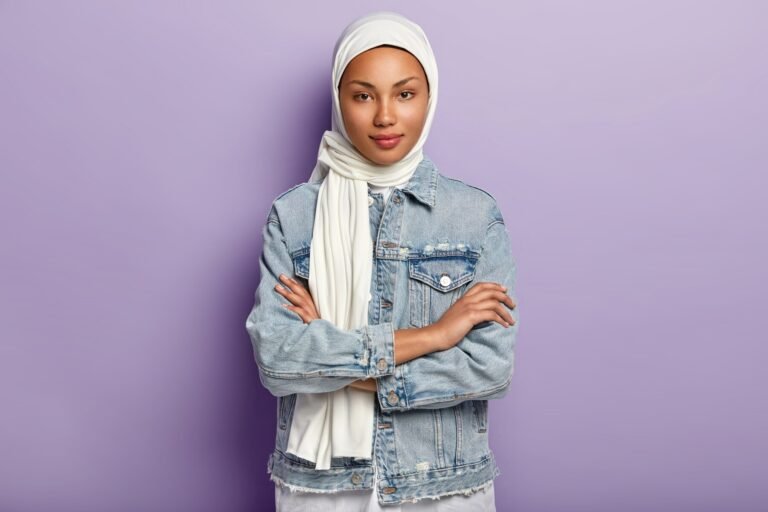Introduction: The concept of Hijabhoojup is a fusion of traditional Islamic modesty with contemporary fashion trends. While the hijab has been a symbol of modesty for centuries, it has now become a powerful statement of personal style, cultural identity, and empowerment. The term Hijabhoojup represents this blending of cultural significance with modern aesthetics, highlighting how fashion can evolve while still maintaining deep roots in cultural and religious practices. In this article, we will explore the many facets of Hijabhoojup and how it has reshaped the modern fashion landscape for Muslim women across the globe.
1. The Evolution of the Hijab in Modern Fashion
Over the years, the hijab has transformed from a simple, modest headscarf to a dynamic fashion statement that embraces a variety of styles and materials. What was once a strictly functional piece of clothing has now become a vibrant expression of personal taste. From brightly colored scarves to luxurious silk fabrics, the hijab’s evolution reflects a broader shift in how modest fashion is perceived. Many Muslim women have become fashion influencers, utilizing their platforms to share their unique styles with the world, showcasing that the hijab is not just a piece of cloth but an integral part of their identity that can be expressed creatively. Through Hijabhoojup, women blend their faith with contemporary fashion trends, proving that modesty doesn’t have to mean sacrificing style.
2. Hijabhoojup as a Cultural Statement
The term Hijabhoojup is not just about the fusion of fashion and modesty; it’s also about reclaiming cultural identity. For Muslim women, wearing the hijab is often a personal choice and an important symbol of religious and cultural adherence. The adoption of modern styles, materials, and accessories within the context of hijab-wearing creates a cultural dialogue that expresses pride in one’s heritage while embracing the diversity of global fashion. Hijabhoojup allows women to merge their cultural values with their globalized surroundings, promoting an environment where traditional attire can still be seen as modern, fashionable, and versatile. This blend of cultural identity with modern fashion trends helps to counter stereotypes and shows the world that Muslim women are diverse, dynamic, and unapologetically proud of their cultural roots.
3. The Role of Social Media in Promoting Hijabhoojup
In the digital age, social media has become a powerful tool for promoting and spreading fashion trends, and Hijabhoojup is no exception. Platforms like Instagram, TikTok, and YouTube have allowed Muslim women around the world to showcase their unique hijab styles, creating a global community that shares ideas, tips, and inspiration. These platforms have provided an avenue for Muslim women to challenge traditional views of the hijab and demonstrate that modest fashion can be trendy, chic, and innovative. Social media influencers, bloggers, and designers are now creating content that highlights the different ways hijabs can be styled, leading to an explosion of creativity within the modest fashion industry. The visibility provided by social media has empowered Muslim women to embrace their heritage and express themselves through their fashion choices in ways that were previously impossible.
4. Empowerment Through Fashion: Hijabhoojup’s Impact on Muslim Women
One of the most powerful aspects of Hijabhoojup is the way it empowers Muslim women to take ownership of their appearance and express their personal style while adhering to their religious principles. With the rise of Hijabhoojup, women are increasingly finding ways to balance their faith with self-expression. Through creative styling, women are embracing their individuality, proving that modest fashion can be both fashionable and empowering. Instead, the Hijabhoojup movement encourages women to experiment, innovate, and confidently express their style on their own terms.
5. The Global Rise of Modest Fashion and Its Future
Hijabhoojup is part of a broader trend in the fashion industry: the rise of modest fashion, which emphasizes clothing that covers the body while still being stylish and modern. In recent years, global fashion brands have started to recognize the demand for modest clothing, resulting in a surge of collections designed specifically for women who wear hijabs. As the market for modest fashion continues to grow, the influence of Hijabhoojup will only expand, offering more opportunities for Muslim women to express themselves through a diverse range of clothing styles. The future of Hijabhoojup is bright, as it promises to further break down barriers between cultural traditions and the global fashion industry. By embracing diversity and promoting inclusion, the modest fashion movement, exemplified by Hijabhoojup, is creating a more inclusive and accepting fashion world where all women, regardless of their background, can express their unique style.
Conclusion:
Hijabhoojup represents more than just a trend; it signifies a powerful movement that blends fashion with faith, culture, and personal empowerment. The integration of hijab into modern fashion, alongside the rise of social media, has provided a platform for Muslim women to express themselves and embrace their identity with confidence and creativity. As this movement continues to grow, the future of Hijabhoojup promises even greater inclusivity and acceptance within the fashion industry, celebrating diversity in all its forms.

